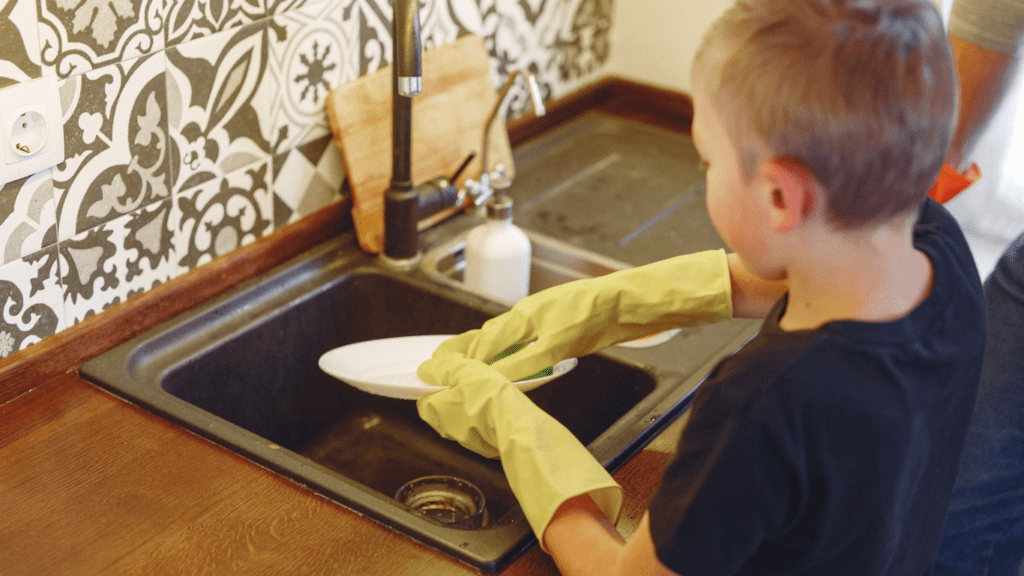Understanding the Importance of Morning Routines
Morning routines set the tone for the entire day. By establishing a consistent routine, families can manage time effectively and reduce stress. According to the American Psychological Association, predictable routines foster a sense of security for children, which in turn supports emotional and cognitive development.
Predictability is key. Children thrive when they know what to expect each morning. Simple tasks like brushing teeth, getting dressed, and eating breakfast become second nature, promoting independence and confidence. Conversely, chaotic mornings can lead to anxiety and behavioral issues.
Adequate preparation impacts productivity. When I plan my mornings, I’m more focused and less hurried. This attentiveness helps kids start their day with a positive mindset, improving their performance in school and other activities.
Regular routines also prioritize wellness. Consistent wake-up times lead to better sleep quality and overall health. The Sleep Foundation reports that children with stable routines sleep longer and more soundly, which benefits their mood and energy levels throughout the day.
Assessing Your Current Morning Routine
Evaluate the effectiveness of your current morning routine. Identify areas that cause stress or delay.
Identifying Pain Points
Pinpoint trouble spots that make mornings difficult. Are the kids rushing to get dressed? Is breakfast a rushed affair? Track these issues for a week to spot patterns. Common pain points include last-minute searches for school items, slow transitions from bed to breakfast, and sibling conflicts. Address each problem with targeted solutions like pre-packing bags and setting out clothes the night before.
Setting Clear Goals
Define specific goals that improve the morning routine. Aim for a smoother transition from sleep to wakefulness, timely departures, and a calm atmosphere. Quantify goals where possible, such as leaving the house by 7:30 AM or reducing morning conflicts. Each goal should contribute to a less chaotic and more enjoyable start to the day for everyone. Prioritize goals based on the biggest pain points identified earlier.
Key Elements of a Successful Morning Routine
A successful morning routine blends key strategies to manage time, health, and organization. Incorporating these elements ensures smooth, stress-free mornings for you and your children.
Waking Up Early
Waking up early anchors the morning routine. Setting alarms 30 minutes before usual wake-up times allows for a calm start. Use gentle alarm tones to avoid abrupt awakenings. Encourage kids to rise at consistent times, even on weekends, to regulate their sleep cycles. This promotes better rest and overall mood.
Healthy Breakfast Ideas
A nutritious breakfast sets the tone for energy and focus. Include options like whole-grain cereals, yogurt with fruit, or scrambled eggs with vegetables. Smoothies made with spinach, berries, and yogurt provide quick nutrition. Prepare parts of the meal the night before for added convenience. This ensures kids receive essential nutrients without morning rush.
Time Management
Effective time management reduces morning stress. Create a visual schedule with time blocks for each task, such as dressing and eating. Use timers to keep everyone on track. Allocate buffer time for unexpected delays. Involve kids in the planning process to boost their independence and adherence to the routine. This balances structure and flexibility, promoting a calm start to the day.
Customizing Routines for Different Age Groups

Different age groups require tailored routines to meet their unique needs and developmental stages. Here are strategies for customizing routines for toddlers, school-aged children, and teens.
Toddlers and Preschoolers
Establishing predictability is crucial for toddlers and preschoolers, as it gives them a sense of security. Integrate simple, repetitive tasks like brushing teeth and getting dressed. Use visual aids like picture charts to illustrate each step. Ensure ample time for each activity to prevent rushing.
- Morning Hygiene: Include brushing teeth and washing face.
- Getting Dressed: Lay out clothes the night before to reduce decision-making stress.
- Breakfast: Choose easy, nutritious options like yogurt and fruit.
School-Aged Children
School-aged children benefit from routines that foster independence and clear expectations. Encourage them to take responsibility for their tasks, integrating structured activities like checking their backpack and a set breakfast time.
- Morning Checklist: Use a checklist for tasks like eating breakfast and packing homework.
- Consistent Wake-up Time: Same wake-up time every day promotes better sleep patterns.
- Preparation: Organize school supplies and set out clothes the night before.
Teens
Teens often have varied schedules due to extracurricular activities and changing school start times. Flexibility and responsibility are key. Help them create a routine that balances their time effectively.
- Time Management: Teach them to use planners or apps to manage their time.
- Healthy Breakfast: Involve them in choosing and preparing their breakfast.
- Independence: Encourage them to set their alarms and manage their morning tasks.
Customizing routines for different age groups can ensure that each child starts their day ready, reducing morning chaos and leading to a more productive day.
Tips for Consistency and Adaptability
Consistent and adaptable routines create smoother mornings for you and your kids. Here are some strategies to achieve this balance.
Creating a Visual Schedule
Visual schedules help children understand and follow the morning routine. I suggest using pictures and simple words for younger kids. For example, include images of a toothbrush, breakfast, and school bag. Older children benefit from more detailed schedules, incorporating times next to activities. Display the schedule in a common area like the kitchen or hallway to ensure easy access and visibility.
Building in Flexibility
Adaptability is key for managing unexpected events or changes. While keeping core activities consistent, allocate buffer times around crucial tasks. For example, allow extra minutes for dressing or breakfast. If variations occur, shift non-essential tasks to later in the day to maintain flow. While the foundation remains stable, embrace flexibility to reduce stress and accommodate unexpected delays.
Rewards and Incentives
Incentives motivate children to adhere to the routine. Implement simple rewards like stickers for younger kids after completing tasks. For older children, offer privileges such as extra screen time or choosing a fun weekend activity. Consistently recognizing their efforts helps reinforce positive behavior and makes the routine enjoyable.
Combining these strategies can create a morning routine that balances consistency and adaptability for both you and your kids.
Overcoming Common Challenges
Creating a morning routine often comes with obstacles, especially for families with varied schedules and personality types. Understanding and addressing these challenges makes mornings smoother and less stressful.
Dealing with Resistance
Resistance from kids is common, whether it’s due to tiredness or reluctance to follow a set routine. This can be mitigated through a few strategies:
- Offer Choices: Letting kids choose between two outfits or breakfast options gives them a sense of control and reduces pushback.
- Establish Incentives: Use a reward system, like stickers, for completing tasks on time, building motivation.
- Set Consistent Wake-Up Times: Regular wake-up times regulate sleep cycles, making mornings less of a struggle.
- Use Visual Aids: Charts with pictures for younger children help them understand and follow the routine independently.
- Plan Ahead: Prepare clothes, backpacks, and lunches the night before to save time in the morning.
- Create Buffer Times: Add extra time for essential tasks like dressing and breakfast to account for unexpected delays.
- Involve Kids in Planning: Let children help create their schedules to increase buy-in and cooperation.
- Simplify Tasks: Break down complex tasks into smaller, manageable steps to ensure everything gets done efficiently.




